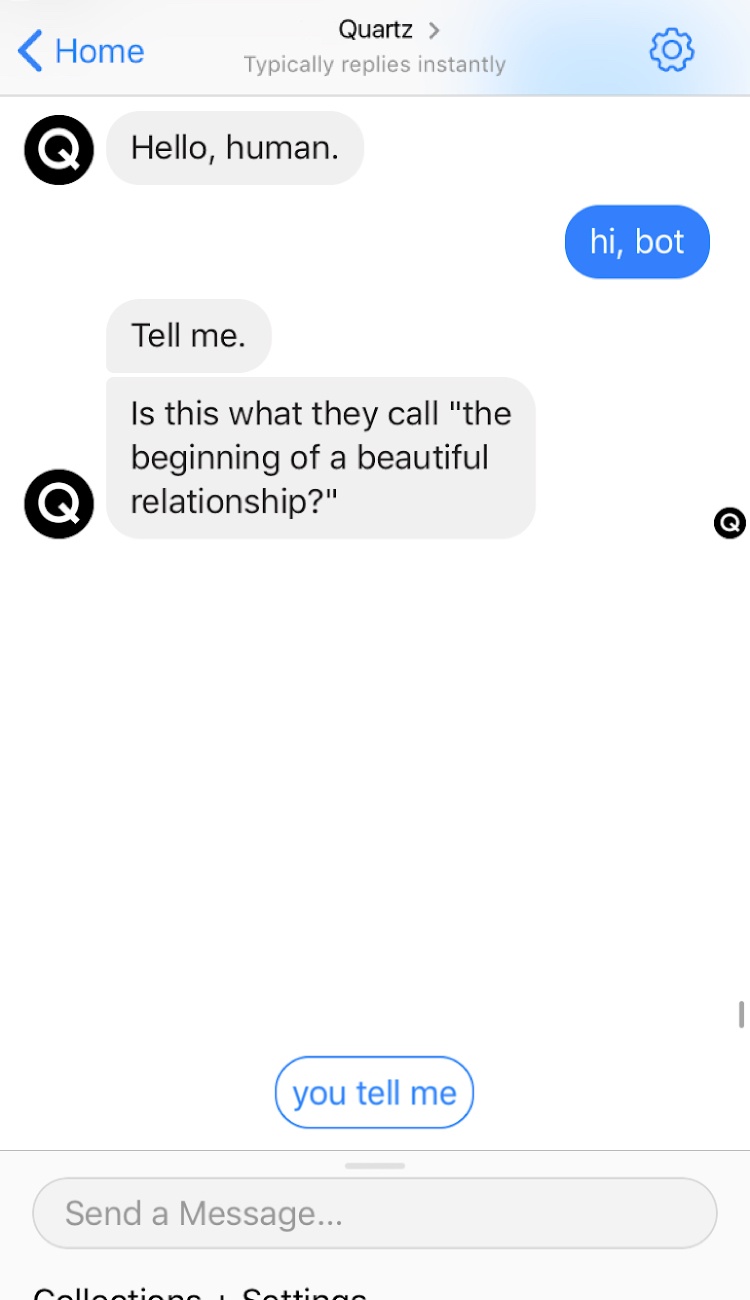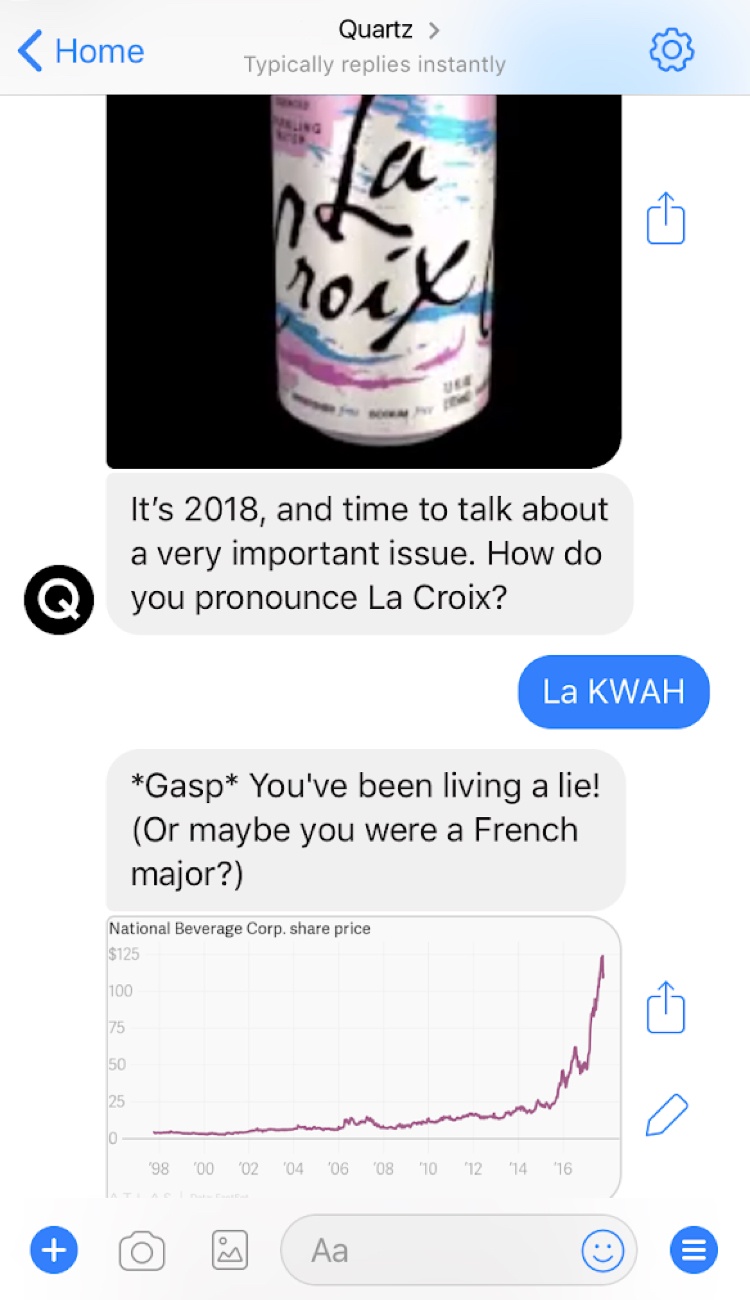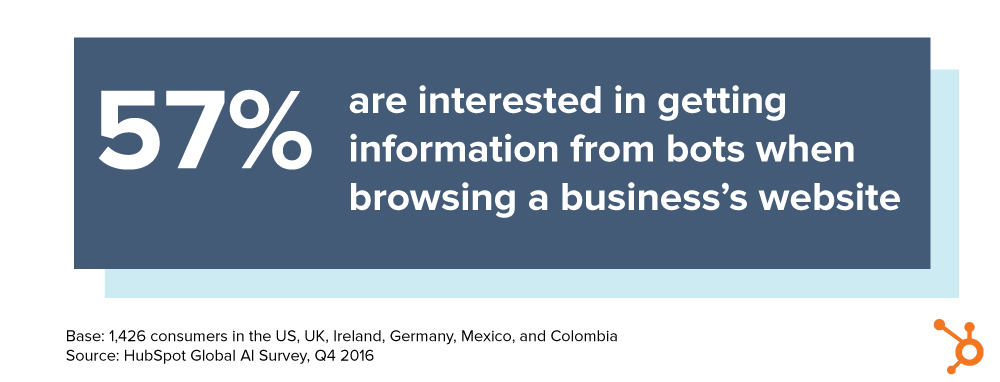It’s a fascinating, but understandable, phenomenon for someone of my generation, who grew up watching movies like Brave Little Toaster — essentially a two-hour anthropomorphization of home appliances. That was part of the science fiction I alluded to earlier: the fantasy that non-human objects like toasters and electric blankets could be happy and sad, just like the rest of us.
As strange as it sounds, that type of story caused me to empathize with what were essentially machines. And while it could be dismissed as little more than an animated children’s film about the misadventures of a vacuum cleaner and its friends in the journey back home, it does appear that we’ve come full circle.
That’s because of the ways we humanize these machines today — in the form of conversational bots.
The Humanization of Brands — by Way of Bot
By humanizing inanimate objects and brands by way of bots, said Intuit CMO Lucas Watson at another panel discussion, you’re creating another method of building brand trust.
“As a brand, you have to think about where you sit on the friend spectrum,” he explained. “How deep a relationship do I want to have with my customer? What permission do I have to go there? What have I done to build that trust?”
And building a human engagement method, like being able to naturally converse with a bot, can help brands get to that point, added co-panelist Kristen Berman of Duke Common Cents Lab.
“You could get a bot to answer a question for you, and get humans to trust it,” she said. “I think we’re getting to that.”
Berman used the example of a human user prompting a bot with the query, “How to break up with someone.” For something like a search engine, those keywords are likely not new, nor is the human propensity to seek expertise and advice for doing so online.
But the idea of asking a chatbot how to do that — one that isn’t necessarily powered by AI, NLP, or machine learning — is fairly recent. And, said Keefe, by paying attention to this behavior, brands actually stand to benefit, especially when it comes to building a better, more humanized bot experience and interaction.
“We have an open white box where people can write anything — and people and other bots do,” he explained. “But, done well, you can learn a lot from that about what people are actually looking for.”
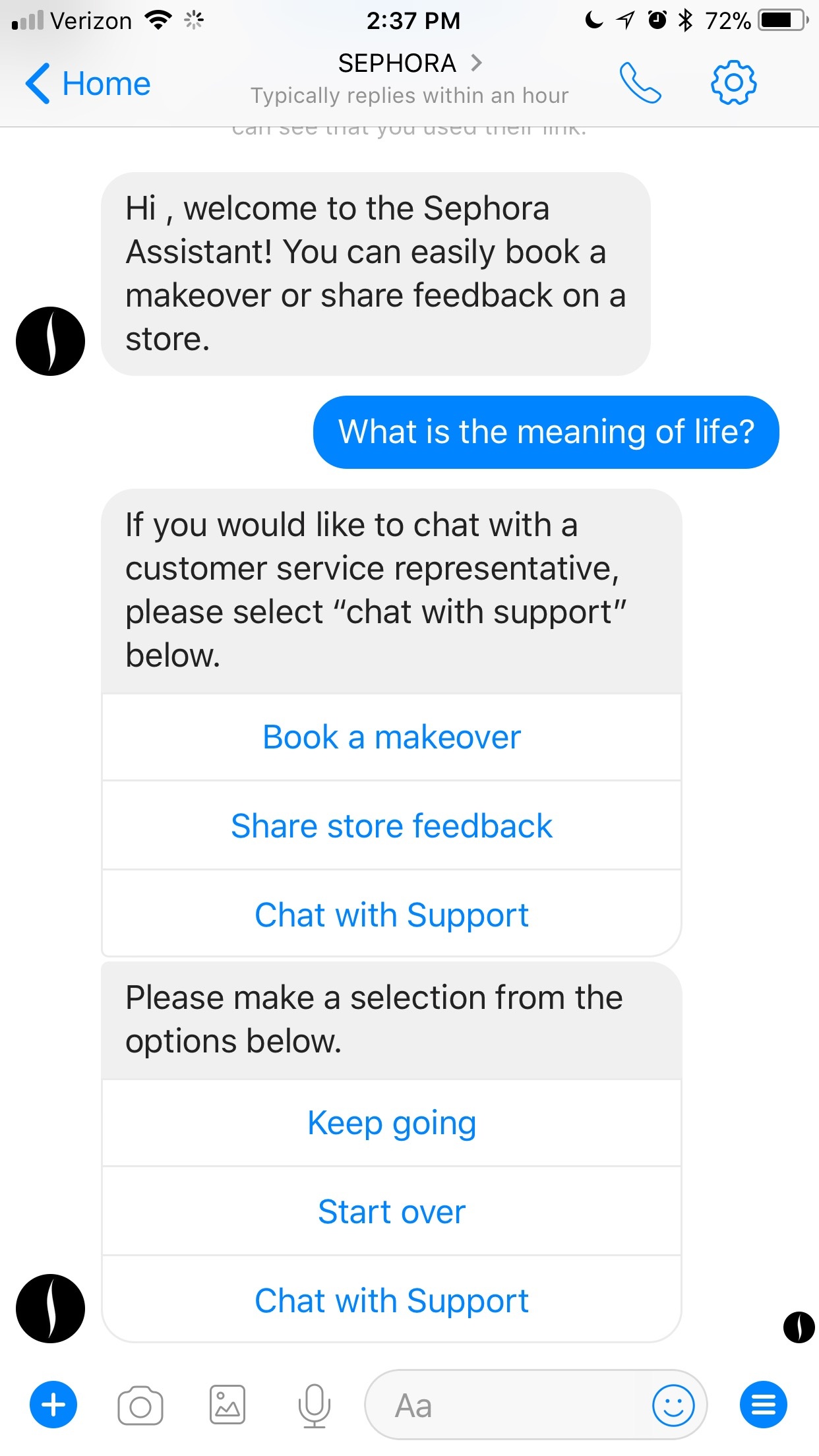
It turns out that “Sephora” isn’t short for “philosophy”
Okay, so maybe it’s not the responsibility of a weather bot to give advice to users on ending relationships. But it does signify the next phase of our increasingly digital habits of communicating and building relationships. What began as social networking and online dating has evolved into asking home speakers for nearby restaurant recommendations and, it seems, robotic meteorologists for personal advice.
And when I think about the idea of users sending selfies to bots, I have to wonder how different it is from, say, posting selfies on Instagram. Sure, we do that to get a response and engagement from a human audience, but what do we put more emphasis on: the audience itself, or the response and engagement?
At another panel discussion about what social media users want, Instagram Product Designer Josh Dickens emphasized the importance of the response to users.
“If you respond,” he said, “I know that you care about me and you’re with me.”
In full transparency, Dickens was speaking to that notion as a response from the people who users care about the most. But what that looks like for each person is different, whether it’s friends and family, or a crowd of adoring strangers. And when examining our evolving behavior with and around bots, it seems like that’s what’s most important to us: the response.
So, I’ll Ask Again: Why Are We So Obsessed With Bots?
Well, maybe that’s just it: the response. Bots almost always get back to us, and when they do, it’s typically in a way that was designed to be helpful, even if pre-programmed or it’s artificially intelligent.
But that’s key to remember when building a bot, Withrow says, especially when composing the copy it will automate to engage with users.
“The way you construct a sentence affects the way people respond,” she said. “I try not to leave room for interpretation in terms of tone. The bot is never sarcastic. And it’s never really negative, either.”
And for Keefe, that’s one of the biggest points of pride for the Quartz Bot: “A lot of the content is written by very talented humans. That’s super key.”
In fact, that’s where the team spends a good chunk, if not most, of its time.
“What we spend a lot of our time on is not training a model to answer the right way, completely, or to have a completely unmoderated conversation with a human,” he said. “Writing the scripts and the dialogue … that’s where the bulk of our work is.”
Which brings up another crucial point for marketers, especially those who are hoping to integrate a bot into its brand trust and humanization strategy. “If you’re having a really good experience with a bot,” Keefe said, “it’s because someone has written really good things.”
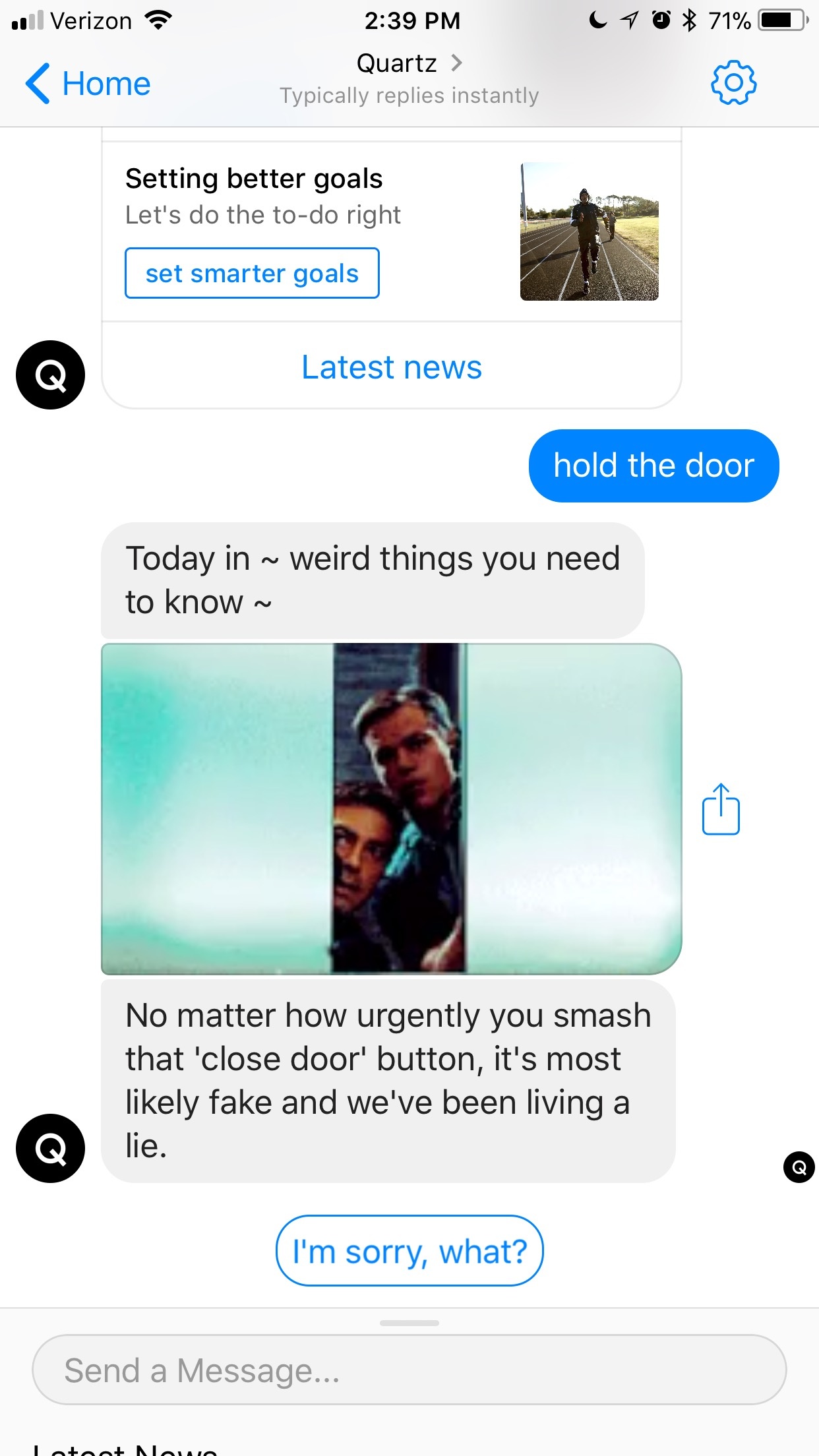
Around here, we’d call that a pretty “inboundy” concept. If you’ve read our work before, you know how much importance we place on quality content, including that which largely involves the written word. It’s content designed to be helpful and engaging — just like a good bot experience.
“Bots help us build better relationships,” Connor Cirillo, HubSpot’s conversational marketing manager, told me, “so humans can have valuable and delightful interactions.”
And if it seems weird, that’s okay — you’re certainly not alone. But Withrow encourages marketers, especially content writers, to embrace that.
“I personally love to lean into the weirdness of talking to a machine,” she said.
It’s truly stranger, as they say, than [science] fiction.


